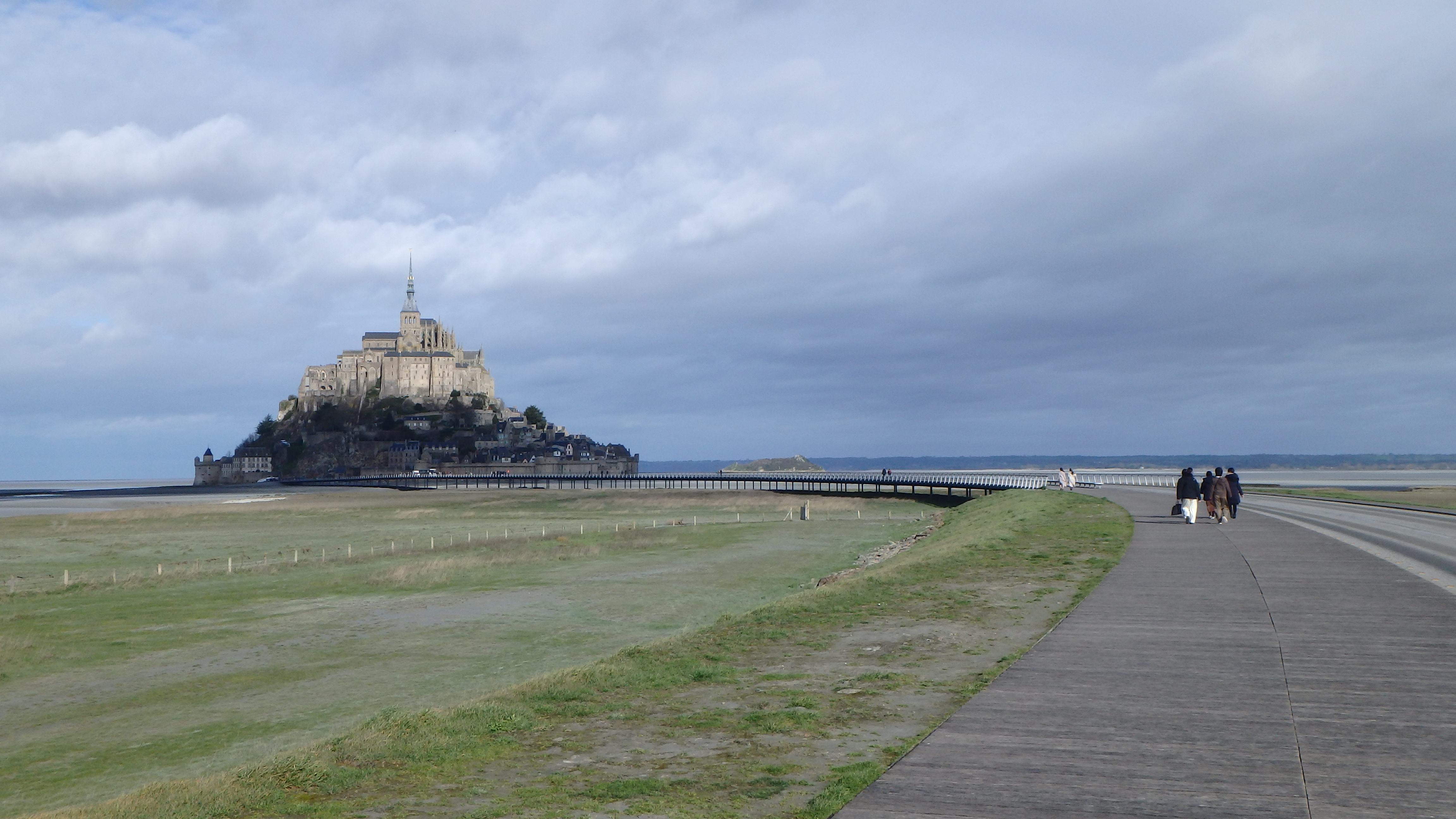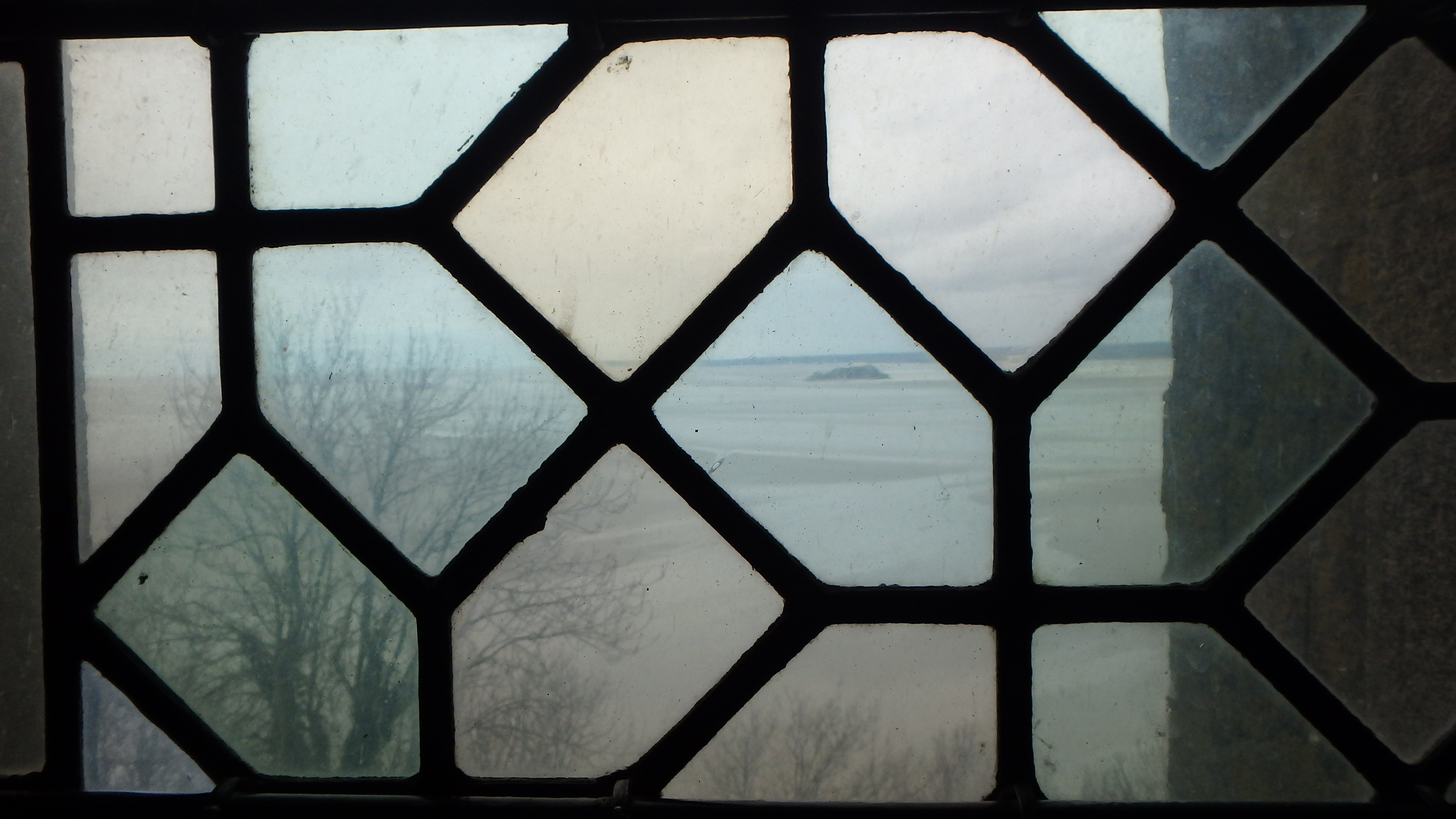A Patient Journey to Mont-Saint-Michel
When I planned a two-day vacation to Mont Saint Michel, I had doubts about my itinerary. Inspired by recent discourse about the environmental impacts of air travel, I had chosen the destination because of its accessibility from Paris by ground transport. Online reviews described the site as historically interesting but drowning in tourist traps and I wondered if a few hours walking around a remote church would prove worth the trouble of getting there. Pleasantly, much of my trip's value ultimately came from precisely this effort. Though the exhaustively photographed views of the mountain and its architectural triumphs are impressive, what I remember most from my visit is the time I took reaching Mont Saint Michel and the heightened state of appreciation inspired by that journey.
From the moment my train left Paris, my attitude started to shift. As I left behind the freneticism of the city, the train's steady pace calmed my mind and I was gently lulled into a spectator's ease. When I arrived in Rennes two hours later, I was sufficiently soothed to enjoy an evening wandering cobblestone streets and admiring the city's public artworks and architectural novelties. I could have easily spent a week getting to know this college town, but the next morning I left early to continue towards the Normandy coast.
The mental deceleration that had started on the previous day's train trip continued. Riding along narrow country roads, I looked out across the hills spotted with quaint cottages and clusters of trees under dramatically overcast skies. Though full, the bus was quiet as my fellow passengers seemed equally transfixed by our surroundings. Occasionally, when the route would pass through a village of a dozen or so stone structures, the silence was broken by seatmates whispering speculations to one another about these rural oases. Only when the bus drew close enough to spot Mont Saint Michel's spire on the horizon did everyone start to stir with collective excitement. People leaned into the aisle, pointing and straining to glimpse our common destination.
Walkway to Mont-Saint-Michel, Image Credit: Emily McLongstreetA free shuttle is available between the bus station and the mount itself, but I opted to savor the final approach by walking the elevated path across the mudflats. I was in no rush. From train to bus to foot, my pace had steadily slowed, leaving me in an increasingly present and appreciative mindset. As I proceeded along the footpath, the abbey-topped mountain in front of me seemed to grow telescopically. With each step I could make out more detailed textures revealing the density of the structures on the island. I looked behind me and saw the sun poised low over the coastal lowlands, piercing through clouds and gracefully illuminating the river delta. Sea birds flew over the heads of idly grazing sheep. By the time I reached the threshold of the island, I felt reverential and serene.
Upon entering the gates, the spell was temporarily broken. In stark contrast to the tranquility outside, the island's bustling main street is packed with tourist shops and restaurants. Luckily, a quick turn up any of the staircases pinched between structures offers an escape from this pressure and a path along the rampart walls provides an alternate route that bypasses the commercial crush below. Moments later I was continuing my ascent with a meandering stroll through a network of paths and gardens. I was struck by the way fellow visitors were engaging with the island's grounds. People casually walked their dogs, while families sat on low walls with picnic lunches, waving away hungry finches. It almost felt like an average public park. If the view of the incoming tide below wasn't such an insistent reminder, one could almost forget that this unlikely locale had been constructed hundreds of years prior and that the same walls and paths had been used by an evolving cast of priests, soldiers, prisoners and pilgrims.
View of the walkway and river mouth from the top of Mont-Saint-Michel, Image Credit: Sal McLongstreetAt the top of the stairs and spiraling pathways lies the abbey, the island's pinnacle structure designed specifically for appreciative reflection. The unique structure has held a place of particular importance to the Christian church since its construction in the Middle Ages. Serving as a monastery and place of worship, it has inspired centuries of pilgrims to journey to the island at great personal expense, even risking their safety in the surrounding mudflats. The areas designated for prayer, including the grand cathedral and the breathtakingly tranquil cloister, do command particular admiration, but the religious aspects provide only part of the inspiring impression.
Inside the abbey church, Image Credit: Emily McLongstreetAs a secular visitor, I found similar fascination in other details. Hand-shaped edges on stained-glass windows, or soot stains around the fireplaces serve as reminders of the centuries of previous inhabitants. The high-altitude view of the Couesnon river mouth is a rare natural spectacle. Indeed, the island's designation as a UNESCO world heritage site is based on its extraordinarily unique combination of architectural, cultural and environmental attributes. Though the modern voyage is admittedly simpler than that undertaken by pilgrims of the past, the remote location means everyone present has necessarily invested time and effort to reach the singular, spectacular location. In this way, the location's changing use is a testament to the very idea of pilgrimage. Collective fascination can imbue a place with meaning and generate a sacred experience that transcends religious distinctions.
View through stained-glass of the Mont-Saint-Michel abbey, Image Credit: Emily McLongstreetPrimed by the patient, anticipatory journey to Mont-Saint-Michel, I found navigating its ancient spaces alongside fellow travelers deeply moving. In the reflective daze of my return trip, I considered how the collective admiration of a historic marvel had reaffirmed my sense of community. I left the island happy to have joined the millions of modern visitors who follow the footsteps of countless pilgrims seeking to quietly share a moment of profundity.
For practical information about planning a trip to Mont-Saint-Michel visit:
La Compagnie des Parcs et des Passeurs du Mont Saint Michel





